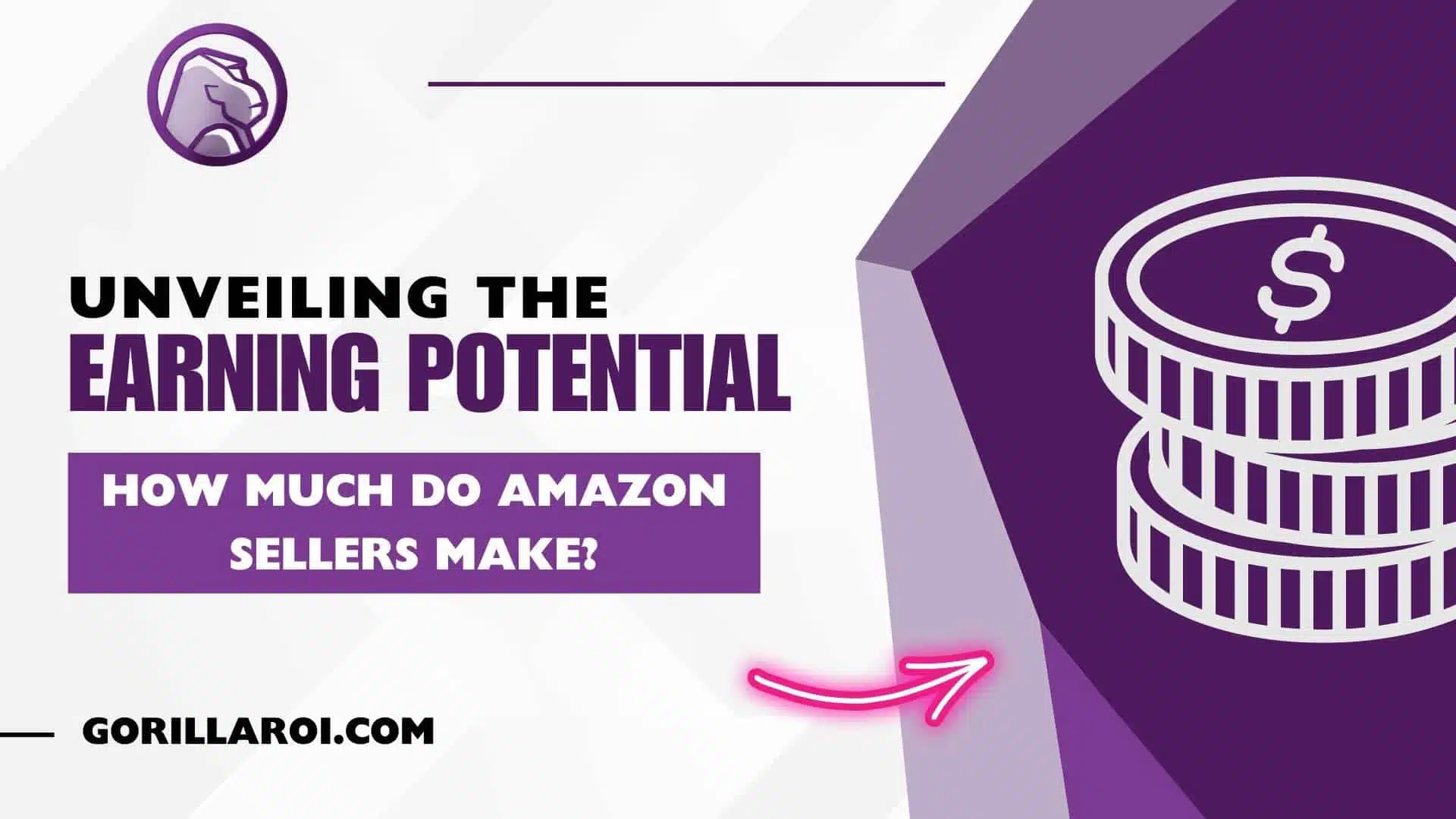What you’ll learn
Are you an Amazon seller struggling to make a profit? Are rising fees and unexpected costs eating away at your profits?
If so, it could be time to consider the Average Cost Method. This powerful tool could help you take control of your finances and ensure that you are maximizing your earnings potential with each sale.
I understand how tricky managing expenses can be – especially when there is no way to predict the cost associated with fulfillment services ahead of time. That’s why I’ve taken the time to investigate this method, which will allow you to accurately calculate all applicable costs for each item sold.
It’s simple enough for any seller to use – regardless of their experience level – but offers sophisticated insights into where money is being lost or gained through Amazon FBA sales.
In this article, we’ll go over exactly what the Average Cost Method is and why it should become part of your business strategy today!
We’ll discuss how it works, why it matters, and how using this method can save you from wasting funds on unnecessary overhead costs. So if saving money while selling on Amazon sounds like something you’d like to achieve, keep reading!
What Exactly Is The Cost Of Goods Sold (COGS) On Amazon FBA?

Are you losing money when it comes to Amazon FBA? It’s a shocking yet true reality for many business owners. The key to success lies in understanding the Cost of Goods Sold (COGS) and how to properly calculate them accurately.
Fortunately, there is an effective solution – the Weighted Average Cost Method (or weighted average method).
The weighted average cost method is used as a periodic inventory system where you need to determine your COGS on sales that occur during each accounting period.
This works by calculating using the average cost formula, which takes into account all costs associated with purchasing products from suppliers or manufacturers, including freight charges and duties at different times throughout the year.
With this method, businesses can easily track their expenses over time instead of trying to figure out the exact amount they spent in one specific month.
It’s important that business owners take advantage of this method if they want to stay profitable while selling through Amazon FBA.
By keeping accurate records of their purchase history and applying the weighted average cost formula properly, they will be able to maximize their profits while minimizing losses due to incorrect pricing calculations.
Why Is It Important To Know Your Sales COGS?
Knowing your Cost of Goods Sold (COGS) is essential for any business, but it’s especially important if you’re an Amazon FBA seller.
COGS can be confusing and difficult to calculate accurately; however, understanding the importance of knowing this figure will help ensure that you are not losing money.
The weighted average, Average Cost Method (ACM), First In-First Out (FIFO), and Last In-First Out (LIFO) methods all play a role in determining the cost of goods sold.
The ACM method is typically recommended as it uses historical data to determine an accurate value of inventory costs by taking into account every purchase transaction made during a given period.
This gives sellers a better picture of their overall cost structure compared to both the FIFO and LIFO methods, which only consider certain purchases or sales transactions at one time.
Having an accurate calculation of your COGS helps keep track of valuable information such as profit margins, pricing decisions, and inventory management strategies.
It also allows Amazon FBA sellers to make sure they are not overspending on supplies or missing out on potential profits from underpricing products due to inaccurate calculations.
Knowing your Sales COGS provides knowledge and insight when making financial decisions about how much to spend on purchasing new inventory and setting prices for customer orders.
Calculating Your Fees And Profits
Now that you understand why it’s important to know your Sales COGS let’s dive into calculating your fees and profits.
When selling on Amazon FBA, the average cost method can help you accurately track inventory costs associated with each sale. Here are various key points to consider when using this approach:
- Average Cost is a cost flow assumption that assumes that products in an inventory account have already been purchased or manufactured at various unit prices and should be valued accordingly.
- The weighted average unit cost assigns a value to each product based on its total cost divided by the number of items sold.
- This method takes all purchase/manufacturing costs into consideration since they were incurred prior to fulfillment, such as taxes, freight charges, insurance, etc., resulting in more accurate profit calculations for a given period of time.
- It also eliminates the need to manually calculate each item’s individual price at the time of sale — making it easier to maintain up-to-date records without losing any accuracy in tracking expenses and profits over time.
By following these four steps, you can ensure that you’re accurately calculating your fees and profits from Amazon FBA sales and not leaving money on the table!
Understanding The Average Cost Method
Are you experiencing a negative cash flow with your Amazon FBA business? You might be surprised to discover that the average cost method could be the answer.
This inventory costing method provides insights into how products are priced and sold, allowing for better financial decision-making. Let’s dive in deeper to uncover what this powerful tool has to offer.
The average cost method is based on two core concepts: the average unit cost of an item and cost flow assumptions.
The former calculates the total cost divided by the number of units purchased or produced during a period; it doesn’t take into account any changes in prices due to inflation or discounts given out along the way.
As for the latter, this assumes all costs involved in obtaining, storing, and selling goods have been included within each purchase or production transaction – from raw materials to overhead expenses like shipping and storage fees.
With these calculations in hand, companies can accurately determine their gross margins as well as make more informed decisions about pricing items for sale.
The average cost method offers many advantages over other inventory costing methods, including greater accuracy when calculating profits, higher transparency of product pricing across time frames, and lower risk of misallocating resources due to inaccurate information.
Additionally, businesses using this technique also benefit from improved financial forecasting capabilities since they gain insight into future trends based on historical data points.
Identifying Hidden Costs
Now that we have established the concept of average cost, it’s important to identify instances where you could be losing money with Amazon FBA. To do this, let’s compare two methods for inventory costs: the average cost method and the specific identification method.
The average cost method uses an item’s overall purchase price divided by its total quantity as a basis for calculating individual unit prices. It is used when there are multiple purchases of similar items, and it allows all related expenses to be included in the calculation.
The downside of this particular approach is that if a business has very small orders or different products coming at different times, then the average cost may not reflect the actual value of each individual item on hand.
In contrast, the specific identification method assigns costs based on what was actually paid for each unique item purchased.
This makes sense when dealing with singular high-value items or larger shipments from different suppliers, but can become complicated if too many details need to be tracked, which increases the administrative time and effort required to manage your inventory costs accurately.
Choosing between these two approaches requires careful consideration of how much detail needs to be captured about your inventory purchases and whether it provides enough savings compared to other methods available.
Tracking Inventory And Fees
The key to success for any business is having a solid understanding of its finances. For Amazon FBA, this means tracking inventory and fees in order to stay on top of costs.
This can be done through the nuanced use of various inventory valuation methods such as Average Cost, First In-First Out (FIFO), or Last In-First Out (LIFO).
The method chosen depends on how often you purchase inventory, the type of items purchased, and other factors specific to your business.
For those who choose the average cost method, perpetual inventory systems are used to calculate the total unit cost based on all inventory purchased over time. This allows sellers to accurately track every dollar spent while still taking advantage of bulk discounts and special deals that come up during sales cycles.
Additionally, it provides an easy way to see which products are selling well and which specific ones may need additional attention from marketing or product development teams.
Strategies For Reducing Costs
In order to reduce costs with Amazon FBA, it’s important to understand the different inventory costing methods available. The average cost method is an effective way of reducing your expenses and ensuring that you are not losing money on each item in your inventory.
By using this method, all items purchased at a given purchase date number will have the same total cost assigned to them.
Here are several strategies for reducing costs by applying the average cost method:
- Assign one purchase price per group of items instead of assigning individual prices
- Track every single item in inventory individually
- Calculate the weighted average cost after each new batch of items purchased
- Utilize any discounts or promotions offered when purchasing goods
- Adjust pricing accordingly if there is an increase in product value over time
By using these strategies, you can ensure that you’re getting the most out of your Amazon FBA investments and avoiding losses due to unprofitable sales.
Keeping up with accurate inventories and taking advantage of discounts and promotions can greatly reduce costs associated with Amazon FBA products. Additionally, adjusting product values regularly helps keep profitability levels high throughout the entire business cycle.
Evaluating Shipping Options
As an Amazon FBA seller, you must evaluate your shipping options in order to maximize profits. To determine the cost of inventory valuation and properly recognize income from sales transactions, it is important to use Generally Accepted Accounting Principles (GAAP).
The most commonly used method for accounting for inventory costing is the Average Cost Method. This method involves calculating a weighted average cost per item based on the price paid for each shipment and quantity purchased.
Income statement accounts are then credited with the appropriate costs associated with the items sold during any given period.
By accurately tracking all shipments and their related costs, you can easily identify which products were more costly than anticipated when compared to how much was actually sold.
With this information at hand, sellers can make informed decisions about product pricing as well as overall profitability within their business operations.
By using the Average Cost Method to account for inventory valuation, Amazon FBA sellers will be able to gain deeper insights into their profitability and ensure that they’re not losing money through mismanagement or faulty shipping choices.
It’s essential that sellers understand how their shipping choices affect their bottom line so that they can make smart financial decisions as we advance. Taking advantage of the best available shipping options could mean increased revenue over time which could lead to better long-term success.
Analyzing Sales Performance Data
Now that we’ve evaluated shipping options and discussed how they could affect profitability, it’s time to analyze sales performance data. By implementing the average cost method of inventory accounting, you can get an accurate assessment of your Amazon FBA business.
This costing method calculates the overall costs associated with acquiring items by taking into consideration the total number of units sold at the selling price.
The primary advantage of this particular approach is that it enables you to identify any losses or gains in profits due to fluctuations in prices across different suppliers.
Additionally, it allows you to adjust your pricing strategies accordingly depending on whether or not a particular product has higher-than-expected demand. With these insights, you can ensure that your Amazon FBA operation remains profitable no matter what market conditions arise.
Managing Returns And Refunds Efficiently
The average cost method can revolutionize the way you manage your inventory expenses! With this powerful tool, Amazon FBA sellers have a reliable approach to determining the ending inventory cost of individual units.
This is based on their actual cost, which includes all returns and refunds that occur during the period.
🗣️ Pro Tip: The average cost method can help manage inventory expenses for FBA sellers. It’s a reliable approach to determine ending inventory cost of individual units.
It’s easy to see how this helps reduce costs associated with managing and tracking inventory items. By using the average cost method, sellers can quickly adjust their calculations when they need to account for returned or refunded products.
This allows them to minimize losses due to defective merchandise or customer dissatisfaction while also simplifying their bookkeeping process. Moreover, it provides a more accurate assessment of stock value in comparison to other methods like first-in-first-out (FIFO).
Overall, the average cost method offers an efficient solution for keeping track of returns and refunds within Amazon FBA operations.
Not only does it help streamline record-keeping processes, but it also ensures accuracy when accounting for any resulting financial implications.
Final Words
Although Amazon FBA may seem like a great opportunity for businesses, it is important to understand that there are costs associated with using the service.
It can be difficult to accurately calculate your fees and profits when selling on Amazon FBA, but understanding COGS, analyzing sales performance data, managing returns efficiently, and exploring shipping options can help you determine if this platform is right for you.
By taking steps to reduce costs where possible and evaluating your current operating expenses relative to potential profits, you can make an informed decision about whether or not Amazon FBA makes sense financially for your business.
I strongly advise researching other cost-effective solutions in addition to Amazon FBA before investing time and money into launching products on the platform.
Although Amazon FBA offers many benefits, it comes at a price. Being aware of all the associated costs and evaluating different strategies will give you peace of mind knowing that you’re making smart investments with your hard-earned money.
By doing so, you’ll ensure that your business continues running smoothly while achieving maximum profit margins!
Comments
Related Posts

Different Types of Amazon Ads: Amazon Advertising Options for FBA Sellers
There are different types of Amazon ads. Amazon offers several…

How Amazon Sellers Use the Amazon Wishlist to Boost Sales
Amazon is a vast and competitive marketplace where millions of…

Unveiling the Earnings Potential: How Much Do Amazon Sellers Make?
Are you curious about how much do Amazon sellers make?…
Ready to sync your Amazon data to Google Sheets?
Gorilla ROI is the easiest way to automatically sync your Amazon data to Google Sheets 24/7 to match your business needs. Uncover actionable insights to sell more and beat the competition.







Leave a Reply